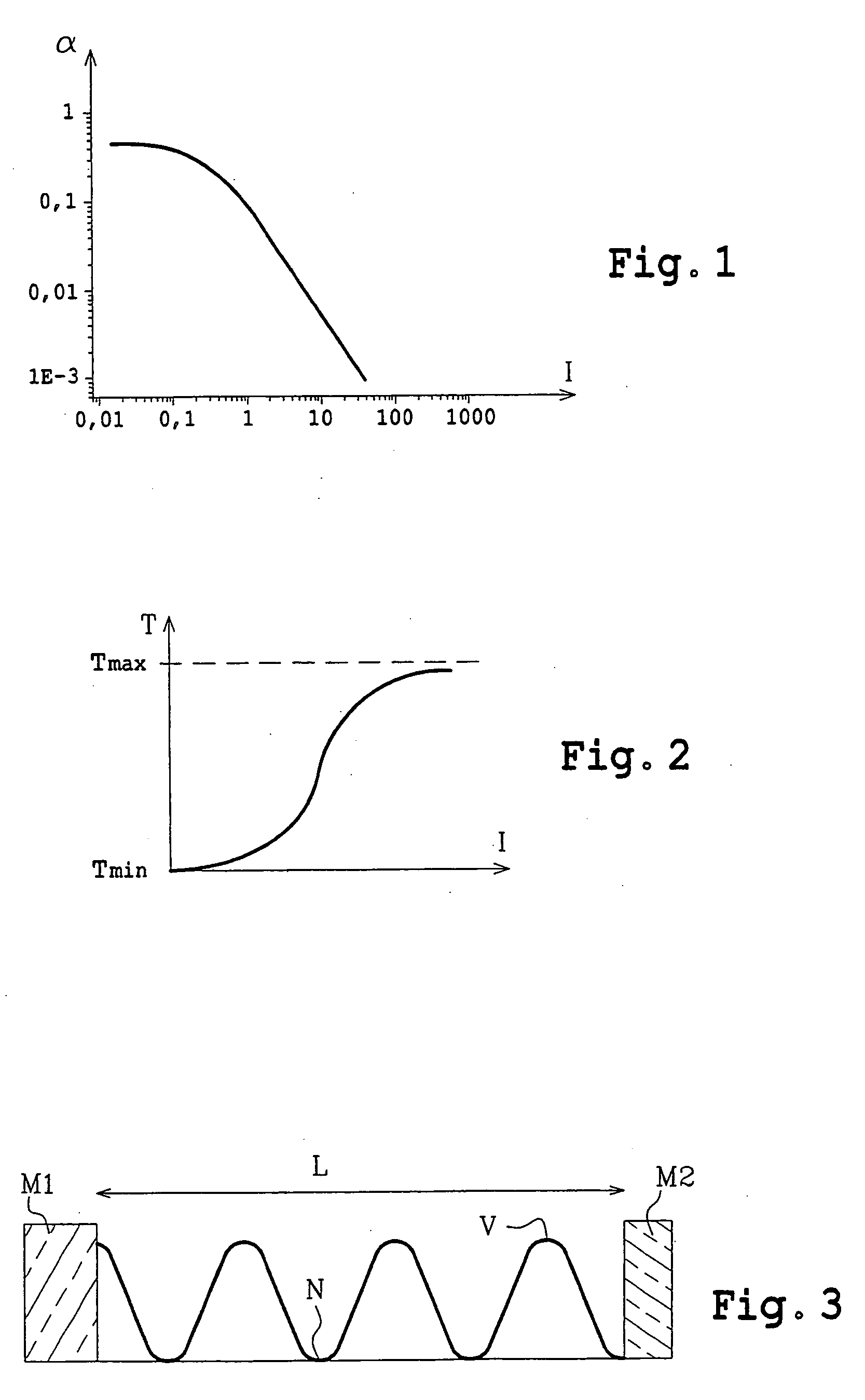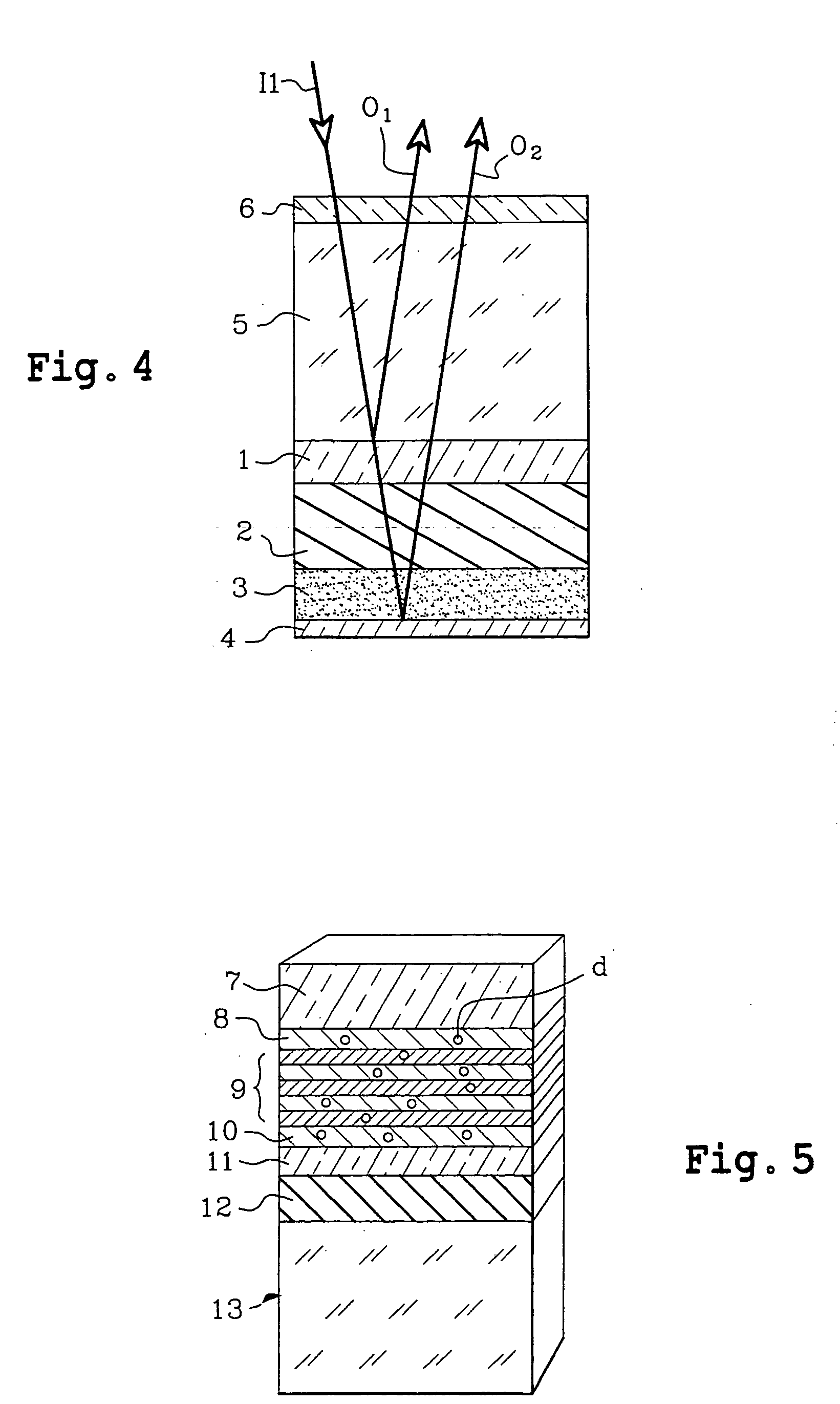Saturable absorber component and method for production of a saturable absorber component
- Summary
- Abstract
- Description
- Claims
- Application Information
AI Technical Summary
Benefits of technology
Problems solved by technology
Method used
Image
Examples
first embodiment
[0117] By way of illustration, FIG. 13 represents the experimental reflectivity curves of the component according to the invention prior to the depositing of the mirror (curve C4) and after the depositing of the mirror (curve C5).
second embodiment
[0118] the invention will now be described in reference to FIGS. 14 to 17.
[0119] According to the second embodiment of the invention, the Bragg mirror is an epitaxy semiconductor mirror made during the growth stage of semiconductive layers on the aforementioned substrate 15. The semiconductive layers which were grown on the substrate 15 are thus successively the barrier layer 14, the Bragg mirror 7, the first phase layer 8, the absorbent structure 9 and the second phase layer 10. The Bragg mirror can then be composed, for example, of an alternation of InP and InGaAsP layers.
[0120]FIG. 14 represents a structure obtained following the epitaxial growth stage and FIG. 15 represents the irradiation stage of the thus obtained structure.
[0121] The irradiation stage follows the depositing stage of the rear mirror 11 and of the metallic layer 16 so as to obtain a structure such as represented in FIG. 16. The structure as represented in FIG. 16 is thus brought into contact with the structur...
PUM
| Property | Measurement | Unit |
|---|---|---|
| reflectivity | aaaaa | aaaaa |
| thickness | aaaaa | aaaaa |
| reflectivity | aaaaa | aaaaa |
Abstract
Description
Claims
Application Information
 Login to View More
Login to View More - R&D
- Intellectual Property
- Life Sciences
- Materials
- Tech Scout
- Unparalleled Data Quality
- Higher Quality Content
- 60% Fewer Hallucinations
Browse by: Latest US Patents, China's latest patents, Technical Efficacy Thesaurus, Application Domain, Technology Topic, Popular Technical Reports.
© 2025 PatSnap. All rights reserved.Legal|Privacy policy|Modern Slavery Act Transparency Statement|Sitemap|About US| Contact US: help@patsnap.com



